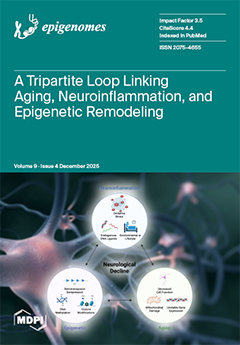Background/Objectives: Histone acetylation regulates gene expression and plays a key role in cancer pathophysiology. Nanotherapeutics are known to modulate histone acetylation and influence cancer progression. This systematic scoping review examines the effects of nanotherapeutics on histone acetylation enrichment across multiple cancers.
Methods: A systematic search of Embase, PubMed/MEDLINE, Scopus, and Web of Science was conducted in accordance with the PRISMA 2020 statement. A total of 13 studies were included. Data were analyzed and visualized in R, and risk of bias was assessed with ToxRTool (OSF Registration: 10.17605/OSF.IO/E643S).
Results: Nanotherapeutics were most commonly evaluated against breast (21.4%), prostate (21.4%), pancreatic (14.3%), and bladder (14.3%) cancers. Primary nanomaterials used in the synthesis of nanotherapeutics included poly(lactic-co-glycolic acid) (25.0%), gold (21.4%) and arsenic oxide (21.4%) nanoparticles. Studied histone acetylation marks included H3K9ac, H3K14ac, H3K27ac and H4K16ac. Treatment with nanotherapeutics increased histone H3 and H4 acetylation enrichment, particularly H3K14ac in colorectal and prostate cancers and H4K16ac in ovarian cancer. Conversely, gold-based nanotherapeutics decreased H3K9ac and H3K14ac enrichment in breast cancer. The optimal concentration for most nanotherapeutics was ≤25 µM, with PpIX-FFYSV showing the strongest anticancer effect (viability <25%). Across four preclinical studies (
n = 58), treatment with the nanotherapeutics reduced tumor size to less than 50% of control in 64% of animals (95% CI: 21–92%, I
2 = 63.8%). Altered histone acetylation was associated with differential expression of
CDKN1A,
HSPA1,
SREBF2 and
TGFB.
Conclusions: The evidence demonstrates that nanotherapeutics can alter histone acetylation patterns by modulating EP300/CBP, GCN5 and HDAC, preventing cancer progression and invasion.
Full article






